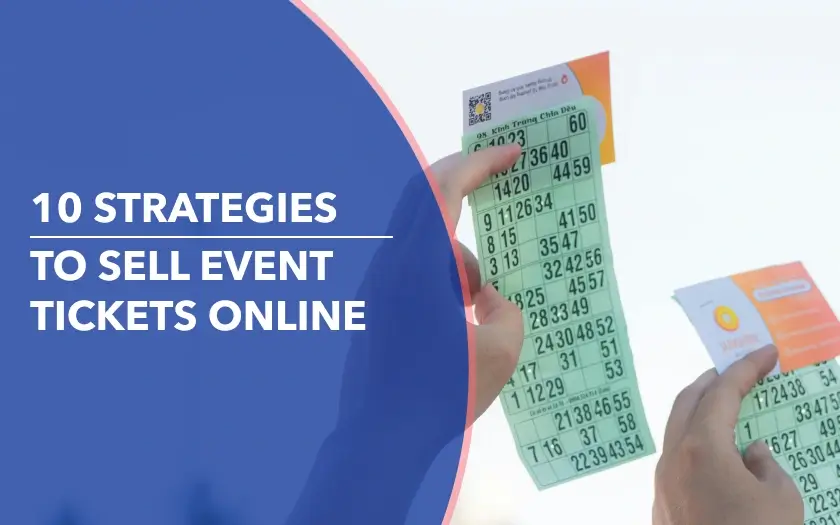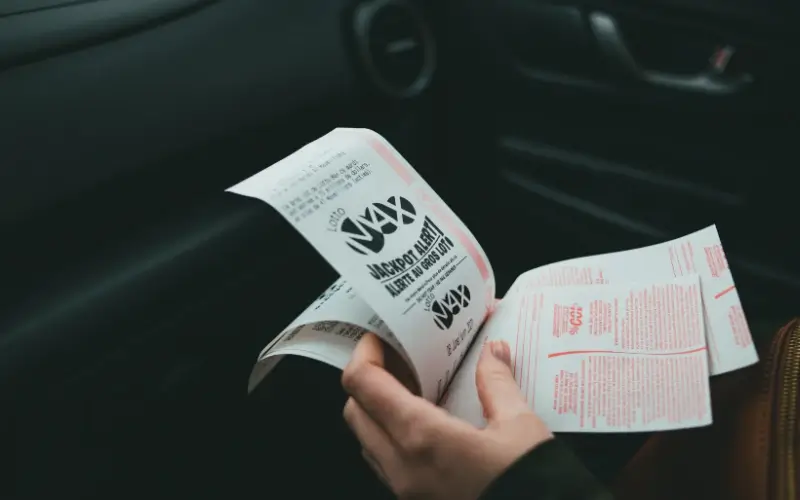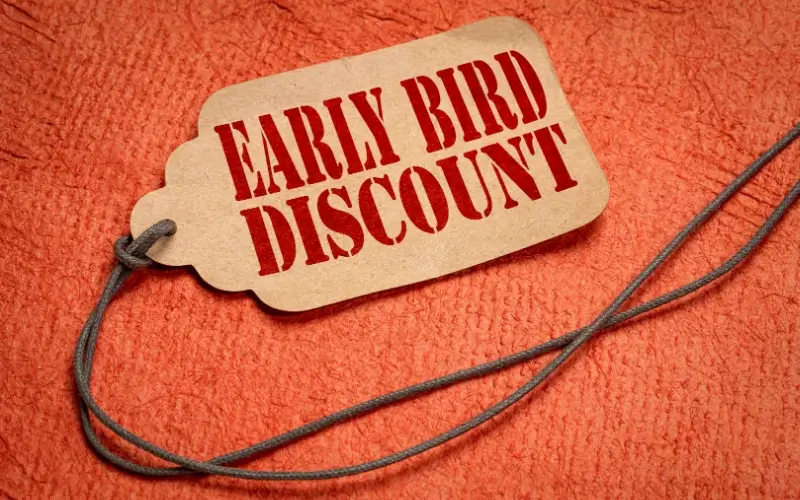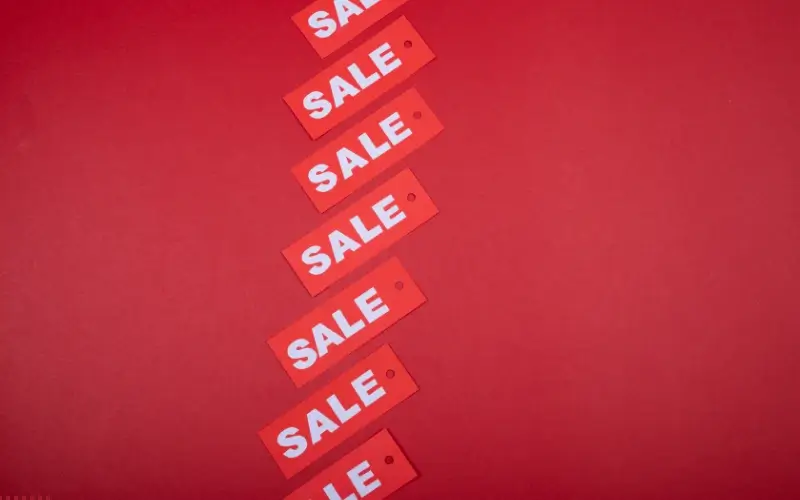How to Sell Event Tickets Online: 10 Strategies to Drive Event Revenue


Walk into any successful event, and you’ll find one thing in common, a ticketing strategy that works as hard as the event itself. Behind every sold-out crowd is a mix of psychology, structure, and timing that turns interest into income.
In this guide on how to sell event tickets online, you’ll uncover 10 proven strategies that go beyond just selling tickets. They build value, prompt urgency, and maximize revenue. Whether your event is in-person, hybrid, or hosted on a virtual event platform, these insights will help you price smarter, sell faster, and turn every seat (or screen) into profit.
{{table-of-contents}}
Why Selling Event Tickets Online Matters

Today’s events, from music festivals to corporate events and local expos, no longer have long queues or paper stubs. Attendees arrive pre-registered, organized by ticket type or audience segment, and ready to engage. Selling tickets online isn’t just a logistical upgrade; it’s a strategic advantage.
The moment your event goes live, your sales page becomes more than just a checkout. It acts as a forecast of demand, a built-in marketing engine that drives visibility, and a real-time insight hub revealing who’s buying, when, and why. Selling tickets online does more than simplify transactions, it transforms how your event earns, engages, and grows.
- Revenue Multiplier: Every pricing choice, from tiered access to early-bird offers, shapes your profit margin. Smart, structured ticketing turns attendance goals into scalable revenue.
- Event Data Engine: Online ticket sales are your golden opportunity to collect information on who your audience is and what motivates them. Insights from this data can then be used to refine marketing, pricing, and engagement.
- Marketing Amplifier: Each purchase becomes a marketing trigger. Confirmation emails, referral codes, and social-share prompts transform buyers into advocates while upsells and bundles raise average order value.
- Sustainability & Scalability: Digital ticketing removes friction, waste, and limits. It automates event registration, reduces printing, and extends your reach globally, from virtual trade shows to hybrid summits.
Selling tickets online isn’t just about convenience; it’s about control. When done strategically, it gives you the insight, flexibility, and automation to maximize every seat, every sale, and every experience your event offers.
10 Proven Strategies to Drive Event Revenue

Every event tells two stories, the one that unfolds on stage, and the one that unfolds in your balance sheet. Behind the applause, the real success of any event comes down to how well you turn excitement into revenue.
These 10 proven strategies bridge creativity with conversion, showing how event pricing, personalization, and smart technology can work together to boost your bottom line.
1. Apply Tiered Ticket Pricing
Once you know who your audience is and what they value, it’s time to translate that insight into structure, and strategy. That’s where tiered ticket pricing comes in. Each tier isn’t just a price point but a promise, a ladder of experiences that lets people choose how deeply they want to engage.
- Create tiers that reflect real value: Start with what makes your event irresistible, then scale it.
- General Admission offers the essentials such as entry, sessions, and community access.
- Premium or VIP adds intimacy, priority, or personalization such as early entry, reserved seating, private lounges, or speaker meet-and-greets.
- Group or Team Bundles reward collaboration and bulk purchase.
- Student or Newcomer Discounts welcome new audiences while maintaining inclusivity.
- Each tier should feel thoughtfully crafted, never random. People pay more when they feel more is being offered, not when they’re told it is.
- Keep tiers clear and strategic, three to four options usually work best. Use subtle pricing cues to guide buyers and give each tier a distinct personality, like:
- Anchor your VIP tier higher so the middle option feels like smart value.
- Use round numbers for simplicity or odd pricing ($97 instead of $100) to signal precision and exclusivity.
When tiers feel purposeful and well-designed, ticketing becomes less a transaction and more an invitation to belong.
Introduce VIP & Premium Experiences
Premium tiers aren’t about velvet ropes or elitism. They’re about access, intimacy, and belonging. They give your most invested guests a reason to pay more, not because they have to, but because they want to. VIP and premium tiers boost your event revenue per guest and dial up the exclusivity, elevating your event’s status and delivering those unforgettable, brag-worthy moments people love.
Premium access works when it feels human, not transactional. The best VIP experiences go beyond early entry or better seats, creating moments of connection and ownership:
- Speaker Meet-and-Greets: Let VIPs connect personally with keynote speakers or panelists in closed-door Q&As or receptions.
- Backstage or Behind-the-Scenes Access: Offer an “all-access pass” to green rooms, rehearsals, or post-session chats.
- Premium Lounges & Hospitality: Design branded lounge areas with plush seating, gourmet snacks, barista bars, and concierge services.
- Swag That Feels Special: VIP-only swag bags with high-end merchandise, gift cards, or partner products. For digital attendees, include exclusive digital content packs or branded NFTs.
- Priority Services: Dedicated event check-in lines, preferred seating, private coat checks, or premium Wi-Fi credentials.
VIP tiers should project quiet status and genuine value. When attendees feel like insiders, they engage deeper, stay loyal, and share their experience. These are some benefits that sponsors also appreciate. Use elevated language, branded touches, and limited availability to build desire. Balance exclusivity with inclusion so every tier feels worthwhile and inspiring rather than alienating.
2. Use Real-Time Dynamic Pricing
Traditional pricing is fixed; dynamic pricing moves with demand. Instead of guessing what buyers will pay, prices adjust automatically in real time, rising as tickets sell and stabilizing when sales slow.
Platforms like Events.com Sell have made this once-complex model effortless, using real-time data to shift prices based on ticket inventory, traffic spikes, and timing. Organizers stay in control while maximizing revenue effortlessly. The platform also offers secure payments through Stripe, automated tier management, and live analytics to track trends.
Transparency is key, so if you’re using this strategy, be sure to clearly state that prices adjust with demand to keep things fair. Dynamic pricing doesn’t replace strategy; it refines it by turning static ticketing into a living, data-driven system that grows with your event’s momentum.
3. Use Referral Incentives to Drive Organic Sales
Some of the most powerful event marketing doesn’t come from ad budgets, it comes from word-of-mouth. When someone shares an event they love, it carries trust, excitement, and authenticity that no campaign can replicate. That’s the heartbeat of referral-driven ticketing, where every attendee becomes an ambassador, and every share turns into potential revenue.
- Turn Attendees into Advocates: After someone buys a ticket, their enthusiasm is highest. Capitalize on that moment. Give them a reason to spread the word:
- Referral discounts: “Bring a friend and both save 10%.”
- Cash-back or credit rewards: Earn $15 for every ticket sold through your link.
- Leaderboard challenges: Celebrate top referrers with exclusive perks, early access, VIP upgrades, or backstage passes.
- Make Sharing Effortless: Simplify referrals with auto-generated links and share buttons on the confirmation page. Pre-filled messages like “Join me — limited seats left!” make sharing natural and fun.
- Gamify the Experience: Add leaderboards or progress bars to spark friendly competition. Visual rewards keep participants engaged and turn sharing into a self-sustaining campaign.
Peer influence is powerful. It increases your reach and ticket sales with minimal marketing spend.
4. Use Time-Based Pricing Models

Not every attendee buys at the same time, and that’s why time-based pricing is one of the most reliable ways to maximize event revenue. Instead of one static price, you adjust ticket costs based on how close you are to the event, rewarding early buyers, sustaining mid-campaign momentum, and capturing higher-value late registrations.
- Start With Early Bird Pricing to Build Momentum: Launch your ticket sales with an early bird tier that’s intentionally limited by date, quantity, or both. A well-structured early bird window creates urgency, boosts initial sales, and gives you social proof early in the campaign.
- Adjust Prices During the Mid-Campaign Lull: If your event is still 1–2 months away, don’t be afraid to refresh pricing. You can temporarily reduce prices or introduce a “mid-campaign tier” to re-energize interest when attention naturally dips. This helps you maintain a steady flow of registrations instead of waiting for last-minute spikes.
- Increase Prices as the Event Approaches: Event industry trends show that attendees are registering later than ever, often within the final few weeks. Use this to your advantage by raising prices closer to the event date. This positions early buyers as savvy planners, protects your revenue, and makes the final push more profitable.
- Pair Every Price Change With Strong Marketing: Time-based pricing works best when people know prices are changing. Announce every adjustment through email, social, and paid marketing with clear, time-bound messages like: “Prices increase in 48 hours — lock in your spot now.” These countdown moments consistently drive spikes in conversions.
You can use Events.com Sell to automate this ticket pricing strategy. With Events.com Sell, you can create multiple ticket types and schedule price changes ahead of time, so pricing automatically shifts as your event progresses. No manual updates, no missed opportunities, just a smart, optimized pricing path from launch to final sale.
Time-based pricing turns your ticketing strategy into a momentum engine: early buyers get rewarded, mid-campaign engagement stays strong, and late buyers pay closer to full value.
5. Add Micro-Ticketing Options
Micro-ticketing transforms your event economics. Instead of offering one all-access pass, you give people the freedom to build their own experience, and pay only for what excites them most. It’s personalization as profit.
- Think of Your Event as a Menu, Not a Meal: A single ticket price assumes everyone values every session equally. But in reality, some attendees are there for the headline speaker, others for the hands-on training, and some for the networking. Micro-ticketing lets you unbundle your event into smaller, focused experiences:
- One-day or single-session passes
- Workshop-only tickets
- Track-specific access (Marketing, Leadership, Product)
- VIP-only masterclasses or pre-event labs
- Monetize the Details: Treat every session or certification as added value. Charge small, transparent fees for premium workshops or learning paths, modest prices that scale quickly with participation.
- Keep the Flow Seamless: Make buying simple with one-click upgrades during checkout. A smooth, intuitive process encourages more purchases and shows what content audiences value most.
Micro-ticketing adds flexibility for attendees and financial elasticity for you. It’s a way to increase revenue per attendee without expanding audience size, a powerful lever for sold-out events or limited-capacity venues.
6. Use Group and Bundle Pricing
Group and bundle pricing taps into one of the most reliable revenue drivers: people buy together. Instead of selling single tickets, you encourage teams, families, departments, or friend groups to register as a unit, increasing average order value with minimal extra effort.
- Incentivize Teams and Groups to Attend: Offer discounted pricing for groups of 3, 5, or 10+. This pulls in entire teams instead of individual attendees and grows your attendee base organically.
- Bundle Tickets With Add-Ons: Create packages that combine tickets with merch, workshops, or premium experiences. Bundles let people feel like they’re getting more value while boosting total revenue per transaction.
- Position Bundles as Smart Value: Make bundles feel strategic, not discounted. Show the savings clearly and highlight the added convenience of one simple, all-inclusive purchase.
- Use Bundles to Support Event Goals: Want more workshop attendance? Bundle it. Want to encourage networking? Offer team bundles. Align each bundle with the outcome you want.
Group and bundle pricing increases reach, boosts cart value, and helps you attract larger segments without lowering your main ticket price.
7. Use Flash Sales and Limited-Time Offers

Flash sales and limited-time offers are some of the quickest ways to reignite interest and drive short bursts of ticket sales. These aren’t necessarily tied to your timeline but are designed to create urgency and pull people off the fence.
- Create Short, High-Energy Sales Moments: A flash sale can last anywhere from a few hours to a couple of days. Use them when engagement dips, when you want to celebrate a milestone, or when you need a quick push in a slow week. The goal is simple: spark immediate action.
- Offer Meaningful but Controlled Discounts: Flash sales don’t have to be huge discounts. Even a small percentage off, a bonus add-on, or a limited promo code can move people who were on the fence. The key is to make the offer feel special, exclusive, and temporary.
- Tie Flash Sales to Event Milestones: Trigger flash offers around moments that naturally build hype, such as: speaker announcements, venue reveal, agenda release, or sponsor partnership announcement. These tie-ins give people a second reason to pay attention.
- Build Urgency With Clear, Time-Bound Messaging: Announce flash sales across your marketing channels with firm deadlines: “Ends tonight,” “24 hours only,” “Midnight deadline,” or “Offer valid for the next 100 tickets.” People convert quickly when they know there’s something to lose.
- Keep It Simple to Avoid Discount Fatigue: Use flash sales sparingly. Too many discounts train your audience to wait for the next deal instead of purchasing now. A well-placed, infrequent flash sale can deliver a powerful spike without undermining your core pricing strategy.
Flash sales give you a flexible, high-impact tool to boost ticket sales when you need it most, without restructuring your main pricing model.
8. Offer Add-Ons and Upgrades
Make the experience bigger, better, and more personal by offering add-ons and upgrades. These are small choices that can dramatically change both how people experience your event and how much revenue you earn.
- Turn Checkout into a Curated Experience: Your checkout page shouldn’t just process transactions; it should invite personalization. Offer thoughtful extras that enhance comfort, convenience, or connection:
- Merchandise bundles that double as keepsakes such as tote bags, T-shirts, or notebooks branded with your event identity.
- Priority seating or fast-track access that saves time and signals status.
- Lunch or networking add-ons that transform breaks into business opportunities.
- Certificates or continuing-education credits for attendees who want to showcase professional growth.
- Make Every Add-On Feel Intentional: The key is relevance. Don’t throw in random upsells; align each add-on with what your audience genuinely values. For example, at a creative conference, give people art merch and memories.
- Keep the Upgrade Effortless: Modern event ticketing platforms let attendees add upgrades with one click, no detours, no separate invoices. Use visual cues like small pop-ups. The goal is to make the decision feel impulsive, easy, and rewarding.
Done right, add-ons and upgrades let attendees tailor the event to their personality while giving organizers an elegant path to higher revenue without raising base prices. They also create more touchpoints for storytelling, a tote bag becomes a walking billboard; a workshop badge becomes a symbol of belonging.
9. Monetize Content with Post-Event Sales
An event doesn’t end when the lights go out, not anymore. In the digital era, every session, every keynote, and every conversation is a piece of content with its own afterlife. If you’ve recorded it, you’ve built an asset. And that asset can keep generating revenue long after the last attendee leaves the room. This is post-event monetization, where yesterday’s moments become tomorrow’s income.
- Turn Sessions into On-Demand Experiences: Offer event replays or recording packages so attendees can watch anytime. It extends your event’s life, expands reach, and adds lasting revenue potential.
- Create Premium Content Libraries: Curate your top sessions into themed collections with bonus materials or guides. Sell them individually or as part of a subscription to keep audiences engaged year-round.
- Offer Exclusive Access to High-Value Segments Extend VIP perks digitally with premium replays, backstage interviews, or extended Q&As, rewarding top-tier buyers and enhancing exclusivity beyond the event.
- Extend Your Sponsorship Reach: Integrate sponsors into post-event videos or replays for ongoing visibility. These branded event sponsorship packages offer long-term exposure and added value for partners.
Post-event monetization turns effort into equity. You’ve already created the content, built the audience, and captured the attention, now you’re simply extending the event ROI.
10. Experiment with Advanced Pricing Tactics
Once your core pricing is live, and dynamic, it’s time to add sophistication. These advanced models fine-tune profitability, loyalty, and fairness, helping your ticketing evolve from static structure to strategic ecosystem.
- Personalized Pricing: Use data from past purchases or engagement history to reward loyalty and welcome first-timers. Returning guests might unlock early access, while newcomers receive special intro offers that reduce hesitation.
- Yield Management: Limit lower-priced inventory early, then let later buyers pay closer to full value. It’s a respectful way to balance accessibility with optimization, rewarding early commitment and protecting premium pricing power.
- Subscription or Season Pass Models: If your events recur, monthly, quarterly, or annually, introduce membership or season-pass pricing. It secures predictable revenue and transforms attendees into a year-round community rather than one-time buyers.
- Ethical Transparency: Show every cost upfront — ticket, tax, and service fee, so your pricing feels honest and human. Transparency isn’t a nice-to-have; it’s a differentiator.
- Behavior-Based Segmentation: Tailor offers by audience type such as first-timers, loyal fans, or virtual attendees. Personalized pricing feels intentional and builds lasting engagement.
Advanced pricing is about control. These models let you adapt fluidly, reward commitment, and strengthen loyalty while keeping your pricing fair, modern, and profitable.
Putting the Strategies into Action

You’ve built the foundation of pricing strategy, now it’s time to make it real. The following steps turn pricing theory into daily practice, helping you launch smoothly, sell confidently, and keep refining with every event.
1. Implement Your Pricing Step by Step
Start with data, not guesswork. Review your costs, past sales patterns, and target audience behavior to determine a realistic base price. From there, define your tiers, general, premium, VIP, bundles, and layer in promotions like early-bird offers or referral codes.
Keep your structure simple: too many tiers or unclear inclusions create friction at checkout. Transparency always wins. Build a timeline for how prices will evolve, early, regular, and final phases, and let automation tools handle changes through dynamic pricing triggers.
Finally, use an event ticketing platform that can manage everything in one place: multiple tiers, promo codes, and real-time price adjustments. The less manual setup you handle, the more you can focus on crafting a great attendee experience.
2. Market and Sell Effectively
Your ticketing page is more than just a checkout; it’s your storefront. It should sell the story, not just the seat. Lead with value by clearly showing what attendees will gain instead of focusing only on what they’ll pay. Use clear visuals, bold calls to action, and concise, benefit-driven copy that highlights the experience you’re offering.
Create urgency without pressure. Scarcity tools like countdown timers or “only X left” notifications can motivate quick decisions when used with authenticity. Expand your reach through affiliate or referral programs, and personalize offers through segmented email campaigns or loyalty rewards to build lasting engagement.
Lastly, optimize for mobile. Most attendees buy on their phones, so a clean, one-page checkout can make or break conversion. Every extra step is a potential drop-off.
3. Track, Measure, and Adjust
Once sales go live, data becomes your compass. Track event metrics or KPIs like average ticket value, conversion rate, and sales velocity to see which tiers or promotions perform best. If mid-tier sales stall, adjust price anchors or bundle value to rebalance demand.
Gather quick feedback on perceived fairness and pricing clarity post-event, and use these insights to shape your next launch. Use analytics tools or dashboards to make decisions based on behavior, not assumptions. Pricing is iterative: measure, refine, repeat.
4. Avoid Common Mistakes
Even great strategies can stumble in execution.
- Avoid flat pricing that ignores different audience types, it caps potential and dulls perception of value.
- Be upfront about fees; hidden costs erode trust instantly.
- Don’t over-discount, you’ll train your audience to wait for markdowns instead of buying early.
- Don’t neglect upsells or post-event monetization. Add-ons, replays, or merch often become your most profitable “extra” tickets.
A clear, data-driven approach will keep your pricing balanced, accessible, fair, and profitable.
How to Sell Event Tickets Online and Make Every Sale Count
Selling tickets is the first touchpoint of your event experience. The real win isn’t just in selling out but in creating value that feels worth every click. The strategies you’ve learned will help you do exactly that, blending psychology, timing, and trust to turn browsers into buyers.
When you’re ready to bring those strategies to life, host your next event on Remo. Beyond immersive virtual experiences, Remo gives you streamlined registration, flexible ticketing options, custom attendee questions, and real-time data insights — everything you need to sell smarter and understand your audience better. Book a free demo today and see how Remo helps you create unforgettable events and manage ticketing with ease from the very first sale.
Frequently Asked Questions About How to Sell Event Tickets Online
1. How do I sell tickets for local events effectively?
Focus on community engagement, use local SEO, Facebook Events, and regional influencers. Offer early-bird discounts and group bundles to drive faster local conversions.
2. Is selling event tickets profitable?
Yes, when pricing is strategic. Combining tiered tickets, add-ons, and upsells boosts profit margins while providing more value to attendees.
3. What pricing models and strategies increase ticket sales?
Dynamic pricing, early-bird offers, and bundled deals work best. These create urgency, reward commitment, and encourage higher average spend per attendee.
4. What are the advantages of different ticketing systems?
All-in-one platforms simplify setup and data tracking, while self-managed systems offer control but require more effort. Choose based on event size, budget, and customization needs.







.webp)




















